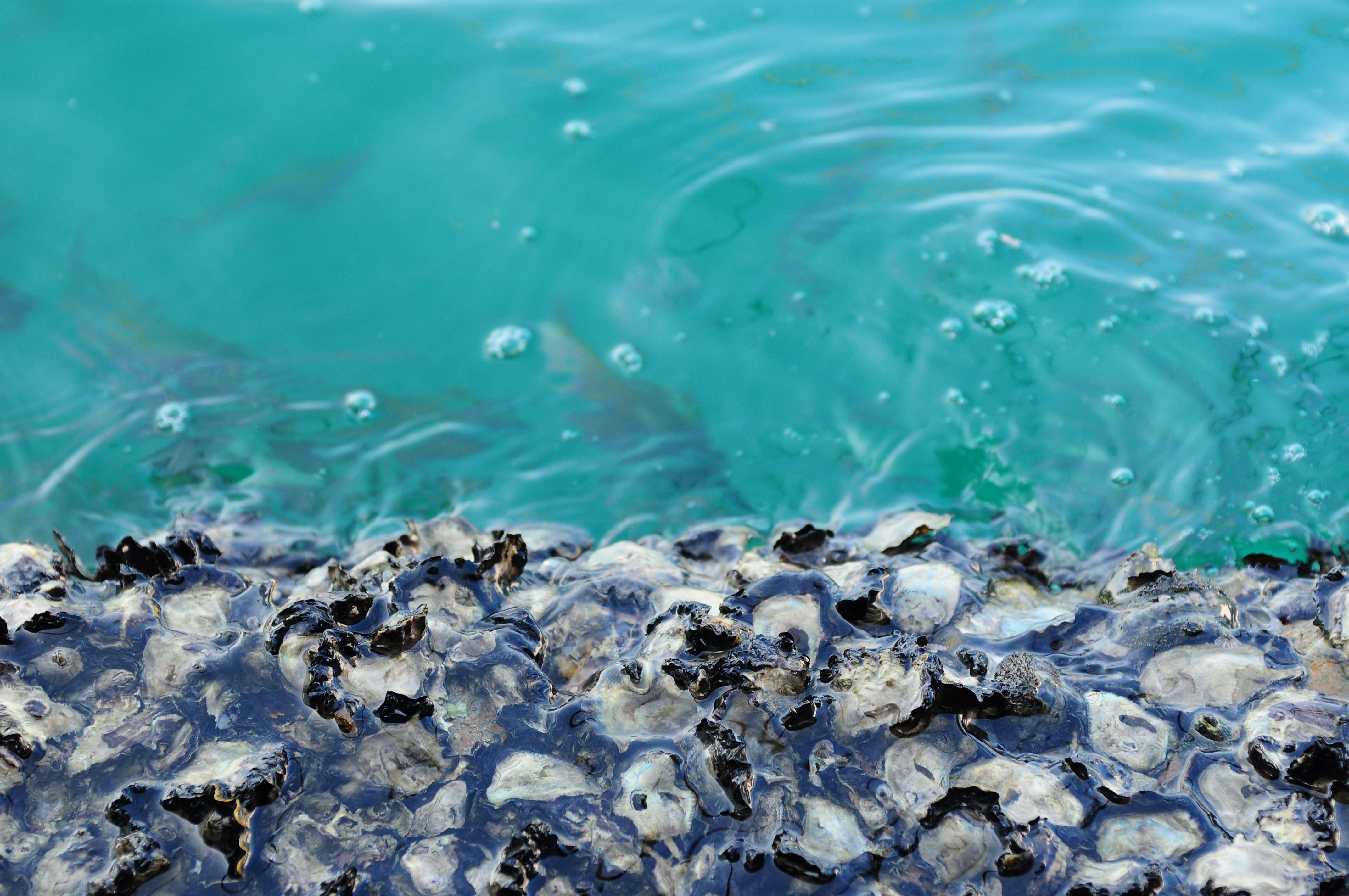George Waldbusser is a professor of ocean ecology and biogeochemistry and graduate program director for the Ocean, Earth, and Atmospheric Sciences program at Oregon State University, and a public voices fellow of The Op-Ed Project.
More than a decade ago, I was called upon to work with oyster hatcheries in Oregon that were seeing unprecedented and catastrophic deaths of their baby oysters. These businesses provide the foundation for much of the industry on the the West Coast and beyond by selling three-week-old oyster “seed” to farmers, who plant them in bays and estuaries and raise them until they reach market size.
But the seeds weren’t even surviving the incubation period, creating major shortages and threatening growers from California to Washington. Hatchery operators and farmers were desperate to know what was causing the oyster seed crisis, and what could be done to restore production.
Industry leaders, scientist colleagues, and I eventually tied the failures directly to the change in marine chemistry from carbon dioxide emissions, a process called ocean acidification. The additional CO₂ was making it extremely difficult for newly hatched oysters, no bigger than the diameter of a strand of hair, to make their first shells in a bay where hatchery operators had successfully produced oyster seed for several decades.
The “evil twin” of climate change, ocean acidification has increased the average acidity of the ocean by approximately 30 percent since the industrial revolution. I think of it as the heartburn of the sea, and it was threatening thousands of jobs in rural coastal communities. Fortunately, it also presented an opportunity to try something new: We prescribed an antacid.
A rather nondescript oyster hatchery sitting on a small bay in Oregon became one of the first in the world to buffer incoming seawater with sodium carbonate*, which lowered the acidity and helped resolve most of the production problems. The hatcheries limed their water much like farmers lime their fields to improve soil fertility. Since the intervention in 2010, regional hatchery output has increased by billions of oyster seed annually. This small-scale ocean alkalinity enhancement project has now been used successfully around the world by intrepid aquaculturists and is being evaluated as a potential approach within a larger framework of ocean carbon dioxide removal by the National Academies of Science.
This treatment for oceans falls under the umbrella of geoengineering, the large-scale intervention and manipulation of earth’s systems and processes to alter the earth’s climate in an attempt to mitigate global warming and ocean acidification. Geoengineering is not without controversy. Human intervention is what has damaged planet Earth, so human intervention should cause collective pause and reflection. However, we can no longer prevent the damage from climate change and ocean acidification merely by reducing carbon dioxide emissions. It’s time we get more comfortable with geoengineering, even as we stay alert to the hidden costs and potential for unintended consequences.
By deploying ocean antacids we are essentially speeding up the natural rock weathering processes that would bring them to the oceans slowly through rivers and streams. The quantity of natural material available on land is massive; unfortunately, weathering is hundreds of times slower than our current rates of carbon dioxide increase.
Mining for alkalizing minerals such as calcite, dolomite, and even shell will of course require energy and may disturb land, which may raise other environmental concerns that must be considered in the cost-benefit analysis of any geoengineering approach. However, for the benefit of the oceans, some costs are worth it. We don’t have time to wait for nature to take its course. We have given the ocean heartburn in a couple hundred years, and it will take the planet hundreds of thousands of years to treat it if left to itself.
Counteracting one global disaster by applying the same hubris that landed us in this crisis may seem foolhardy. None of these issues are simple, nor should actions be taken in the vacuum of simply what the science says, absent social and economic considerations. But we can efficiently and, I believe, quickly scale alkalizing approaches from hatcheries (inside contained waters) to larger ecosystems. Doing so will help us determine how effective it is as well as identify any unintended consequences. One study of coral reefs demonstrated that alkalinity enhancement increased coral growth by 7 percent and lowered carbon dioxide levels in reef waters to pre-industrial levels. Broader investigations have shown nuanced effects: Some organisms benefit, and others may lose out. The details matter, and we need robust science to make the transition from theory to application.
As part of a research program funded by the ClimateWorks Foundation, my colleagues and I are exploring how shell and mineral antacids benefit estuarine habitats and enhance populations of shell-forming organisms. Part of the problem is overharvesting; most of our temperate estuaries have lost significant amounts of alkalizing shell material. In fact, oysters were once so abundant in temperate estuaries that some argue they are functionally extinct in many places. There is evidence that shell-forming organisms are social — they often actively seek out other shelled organisms or shelly habitats to settle in, thus one of the most popular oyster restoration approaches is to return shucked shells to their former habitats. Unfortunately, we do not yet broadly manage seashells as the valuable geochemical resource they may be.
Ultimately, rebalancing the ocean is a moral obligation, one that depends on us acting decisively with the best available science. Our own activities have created this case of heartburn, and they threaten the future of world fisheries, many of which support communities of color and Indigenous peoples who rely on shellfish as traditional foods and medicines. In many developing countries, food from the sea makes up a much larger proportion of protein consumption than it does in the United States. We must act soon and deploy the full power of our collective research if we are to steward our ocean resources sustainably for all, including future generations.
*Correction: An earlier version of this post misidentified the base used in the Oregon oyster hatchery as sodium bicarbonate, rather than sodium carbonate.
The views expressed here reflect those of the author. Fix is committed to publishing a diversity of voices, and we want to hear from you. Got a bold idea, fresh perspective, or insightful news analysis? Send a draft, along with a note about who you are, to fix@grist.org.



